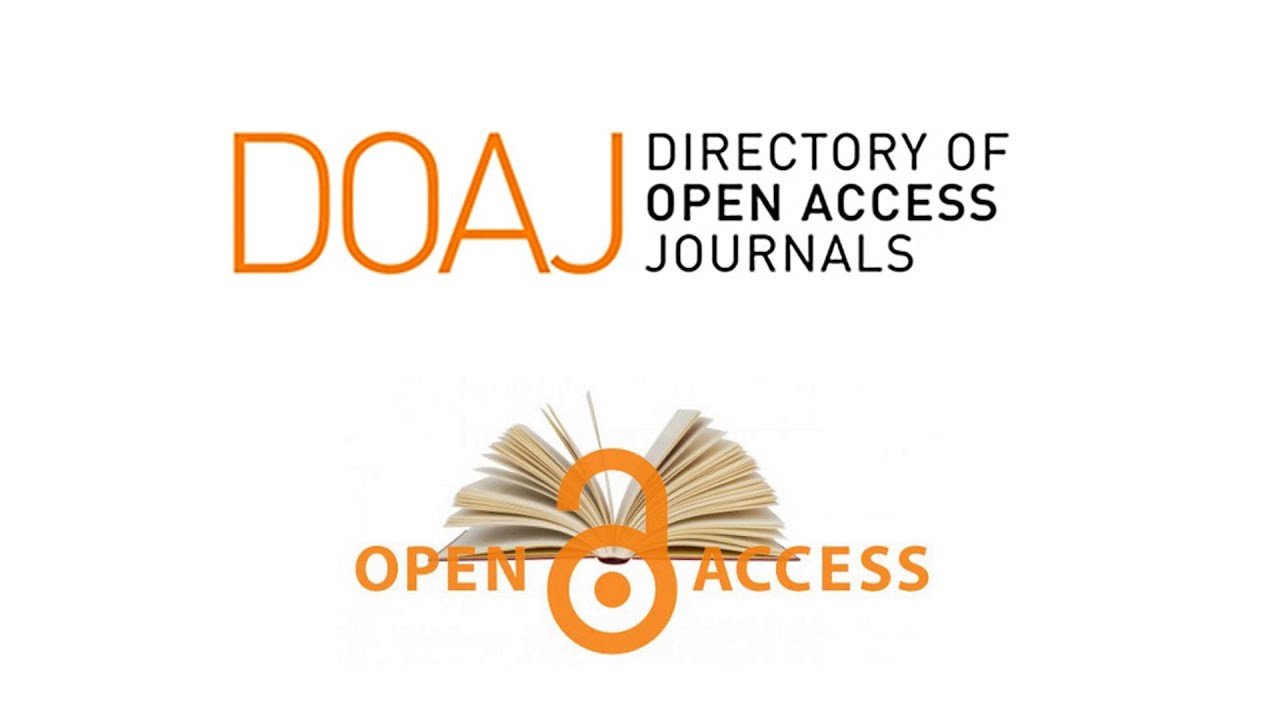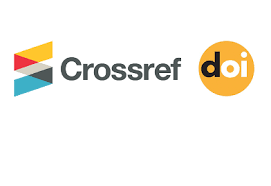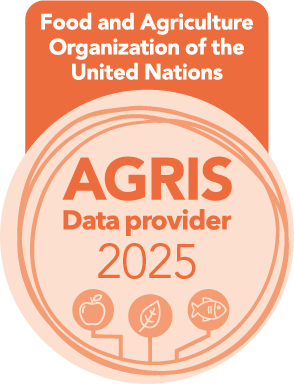Effects of frequency of feeding on Nile tilapia (Oreochromis niloticus) growth in a closed system
DOI:
https://doi.org/10.58629/ijaq.v22i2.719Keywords:
Feeding frequency, Growth Performance, Nile Tilapia, Survival Rate.Abstract
This study aims to assess the influence of feeding frequency on growth, feed conversion efficiency, and survival rate of Nile tilapia (Oreochromis niloticus). The experiment involved 80 fish of comparable size, and the average weight was 5.78 g. Each of the eight 45-liter tanks contained ten fish. The experiment includes two replicates for each feed frequency. The fish were categorized into four categories based on their feeding frequency: once daily (A), twice daily (B), thrice daily (C), and four times daily (D). The fish were fed at a daily rate of 3% of their body weight. The highest weight gain 12.52 g, relative growth rate 214.57%, specific growth rate 2.605 g/day%, and feed conversion rate 2.06 were observed in Treatment C, which was provided three times daily. Moreover, all these values varied significantly from the other treatments, and the analysis of variance indicated substantial differences (p < 0.05). According to the results of the present study, Nile tilapia growth in aquaculture systems is facilitated by an increase in feeding frequency; this study indicates that feeding fish thrice daily may enhance their growth and feed conversion efficiency; hence, farmers should use this practice. The study revealed that feeding frequency is essential for enhancing production in aquaculture, as regulating feeding intervals can result in improved growth rates of Nile tilapia.
Metrics
References
Abdelhamid, A. M.; khalil, F. F.; El-Barbary, M. I.; Zaki, V. H. and Hussein, H. S. (2002). Feeding Nile tilapia on Biogen to detoxify aflatoxin diets. Proc. Con. Animal, Fish Prod. Mansoura, 24- 25 Sep., pp: 207-230.
Abdel-Hakim, N. F.; Bakeer, M. N. and Soltan, M. A. (2002). Water Environment for Fish Culture. Deposition No. 4774.
Aderolu, A. Z.; Lawal, M. O.; Eziefula, P. N. and Ahaiwe, E. E. (2017). Feeding frequency and feeding regime in catfish: effects on nutrient utilization, growth, biochemical and haematological parameters. J. Agri. Sci., 62: 395–410.
Al-Aswad, M. B. (2000). Meat Science and Technology, Ministry of Higher Education and Scientific Research, Dar Al-Kutub Foundation for Printing and Publishing, University of Mosul. 139 pp.
Al-Dubakel, A. Y.; Al-Hamadany, Q. H. and Jabir, A. A. (2014). The relationship between the diet flavor and feeding sequence on the growth of common carp (Cyprinus carpio L.) fingerlings. Basrah J. Agric. Sci., (Special Issue) 26(2):130-142.
Al-Hamadany, Q. H.; Shihab, H. A.; Mahdi, A. A.; Yesser, A.T. and Mankhi, J. R. (2009). Effect of daily feeding frequency and feed conversion on juvenile common carp Cyprinus carpio L. Basrah Journal of Veterinary Research, 8 (2): 70-77.
Al-Rawi, K. M. and Khalaf Allah, A. M. (2000). Design and Analysis of Agricultural Experiments, Dar Al-Kutub for Printing and Publishing, University of Mosul, 488 pp.
AOAC. (2006). Association of Official Analytical Chemists Official Methods of analysis, 15th ed., Washington, DC., USA.
Aydin, I.; Küçük, E.; Sahin, T. and Kolotog lu, L. (2011). The effect of feeding frequency and feeding rate on growth performance juvenile black sea turbot (Psetta maxima). J. Fish. Sci. com. 5, 35–42. https://doi: 10.3153/jfscom.2011004.
Azrita, A.; Syandri, H. and Adnestasia, L. (2020). Feed Conversion Ratio of Gurami Sago (Osphronemus Goramy) Fingerlings in A Recirculating Aquaculture Pond System. The 8th International and National Seminar on Fisheries and Marine Science. Earth and Environmental Science, 430: 1-7. DOI 10.1088/1755-1315/430/1/012029.
Bhuiyan, M. R. R.; Zamal, H.; Billah, M. M.; Bhuyan, M. S.; Asif, A. A. and Rahman, M. H. (2018). Proximate composition of fish feed ingredients available in Shibpur Upazila, Narsingdi district, Bangladesh, Journal of Entomology and Zoology Studies, vol. 6, pp.1345–1353.
Busti, S.; Bonaldo, A.; Dondi, F.; Cavallini, D.; Yúfera, M.; Gilannejad, N.; Moyano, F. J.; Gatta, P. P. and Parma, L. (2020). Effects of different feeding frequencies on growth, feed utilisation, digestive enzyme activities and plasma biochemistry of gilthead sea bream (Sparus aurata) fed with different fishmeal and fish oil dietary levels. Aquaculture, 529:735616. https://doi.org/10.1016/j.aquaculture.2020.735616.
Costa‐Bomfim, C. N.; Pessoa, W. V. N.; Oliveira, R. L. M.; Farias, J. L.; Domingues, E. C.; Hamilton, S. and Cavalli, R.O. (2014). The effect of feeding frequency on growth performance of juvenile cobia, Rachycentron canadum (Linnaeus, 1766). Journal of Applied Ichthyology. 30:135–139. https://doi.org/10.1111/jai.12339
Daet, I. (2019). Study on culture of sea bass (Lates calcarifer) inhapa-in-pond environment. Earth Environ. Sci. 230, 1755–11315.
Daudpota, A. M.; Abbas, G.; Kalhoro, I. B.; Shah, S. S. A.; Kalhoro, H.; Rehman, M. H. and Ghaffar, A. (2016). Effect of Feeding Frequency on Growth Performance, Feed Utilization and Body Composition of Juvenile Nile Tilapia, Oreochromis niloticus (L.) Reared in Low Salinity Water. Pakistan Journal of Zoology, 48(1): 171-177.
Davies, O. A.; Inko-Tariah, M. B. and Amachree, D. (2006). Growth response and survival of Heterobranchus longifilis fingerlings fed at different feeding frequencies. Afr. J. Biotechnol., 5: 778-787.
Du, Z.Y.; Liu, Y.J.; Tian, L.X.; He, J.G.; Cao, J.M. and Liang, G.Y. (2006). The influence of feeding rate on growth, feed efficiency and body composition of juvenile grass carp (Ctenopharyngodon idella). Aquacult. Int., 14: 247–257.
Dwyer, K. S.; Brown, J. A.; Parrish, C. and Lall, S. P. (2002). Feeding frequency affects food consumption, feeding pattern and growth of juvenile yellowtail flounder (Limanda ferruginea). Aquacul- ture, 213 (1–4): 279–292. https://doi.org/10.1016/S0044-8486(02)00224-7
Hassan, H. U.; Gabol, K.; Wattoo, J.; Chatta, A. M.; Ali, Q. M.; Mahmood, K.; Hussain, M.; Abro, N. A.; Attaullah, M.; Rahman, S. U.; Rashid, A.; Rahman, M. A. and Hossain, M. Y. (2021). First Pacific White shrimp, Litopenaeus vannamei (Boone, 1931) culture in Pakistan: evaluation of optimum salinity level for the growth performance and survival in the hypo saline and hyper saline condition under pond ecosystem. The J. Anim. Plant Sci. 31 (5), 1018–7081. https://doi.org/ 10.36899/JAPS.2021.5.0351
Hung, S.S.O.; Conte, F.S. and Hallen, E.F. (1993). Effects of feeding rates on growth, body composition and nutrient metabolism in striped bass (Morone saxatilis) fingerlings. Aquaculture, 112: 349–361.
Gokcek, C. K.; Mazlum, Y. and Akyurt, I. (2008). Effects of feeding frequency on the growth and survival of Himri barbell and Barbus luteus fry under laboratory conditions. Pak. J. Nutr., 7(1): 66-69.
Guo, Z.; Cui, J.; Li, M.; Liu, H.; Zhang, M.; Meng, F.; Shi, G.; Wang, R.; He, X. and Zhao, Y. (2018). Effect of feeding frequency on growth performance, antioxidant status, immune response and resistance to hypoxia stress challenge on juvenile Dolly varden char (Salvelinus malma). Aquacult., 486, 197–201. https://doi.org/10.1016/j.aquaculture.2017.12.031
Lee, S. M. and Pham, M. A. (2010). Effects of feeding frequency and feed type on the growth, feed utilization and body composition of juvenile olive flounder, (Paralichthys olivaceus). Aquacult. Res. 41:166–171. https://doi.org/10.1111/j.1365-2109.2010.02491.x
Mavraganis, T.; Onstantina, C. C.; Kolygas, M.; Vidalis, K. and Nathanailides, (2020). Environmental issues of Aquaculture development. Egypt. J. Aquat. Biol. Fish. 24, 441–450. DOI: 10.21608/ejabf.2020.85857
Ng, W.K.; Lu, K.S.; Hashim, R. and Ali, A. (2000). Effects of feeding rate on growth feed utilization and body composition of a tropical bagridae catfish. Aquacult. Int., 8: 19–29.
NRC (2011). Nutrient Requirements of Fish and Shrimp, National Academies Press, Washington, DC, USA, 392p. https://doi.org/10.17226/13039.
Okomoda, V. T.; Aminem, W.; Hassan, A. and Martins, C. O. (2019). Effects of feeding frequency on fry and fingerlings of African cat fish (Clarias gariepinus). Aquacult., 511, 1–6. https://doi.org/10.1016/j.aquaculture.2019.734232.
Priestley, S. M.; Stevenson, A. E. and Alexander, L. G. (2006). The influence of feeding frequency on growth and body condition of common Goldfish, Carassius auratus. American Society for Nutrition. J. Nutr. 136: 19795- 19815.
Silva, E. C.; Sterzelecki, F. C.; Musialak, L. A.; Sugai, j. k.; Castro, j. j. p.; Pedrotti, F. S.; Magnotti, C.; Cipriano, F. S. and Cerqueira, V. R. (2020). Effect of feeding frequency on growth performance, blood metabolites, proximate composition and digestive enzymes of Lebranche mullet (Mugil liza) juveniles. Aquaculture Research, vol. 51, pp. 1162–1169. https://doi.org/10.1111/are.14466
Spss (2000). SPSS for windows base system user’s guide, release 10.0 Chicago, USA. Sung-Yong, O. and Venmathi, M.B.A. (2015). Feeding frequency influences growth, feed consumption and body composition of juvenile rock bream (Oplegnathus fasciatus). Aquaculture International 23(1):175–184.
Sveier, H.; Raae, A. J. and Lied, E. (2000). Growth and protein turnover in Atlantic salmon (Samosalar L.), the effect of dietary protein level and protein particle size.Aquaculture, Vol.185,pp.101-120.2000.
Thongprajukaew, K.; Kovitvadhi, S.; Kovitvadhi, U. and Prepramec, P. (2017). Effects of feeding frequency on growth performance and digestive enzyme activity of sex reversed Nile tilapia (Oreochromis niloticus). Agri. Natur. Resour. 51, 292–298. https://doi.org/10.1016/j.anres.2017.04.005
Ul Hassan, H.; Ali, Q. M.; Khan, W.; Masood, Z.; Abdel-Aziz, M. F. A.; Ali Shah, M. I.; Gabol, K.; Wattoo, J.; Chatta, A. M.; Kamal, M.; Zulfiqar, T. and Hossain, M. d. Y. (2021). Effect of feeding frequency as a rearing system on biological performance, survival, body chemical composition and economic efficiency of Asian seabass Lates calcarifer (Bloch, 1790) reared under controlled environmental conditions. Saudi J. of Bio. Sci., 28(12): 7360–7366.

Downloads
Published
How to Cite
Issue
Section
License
Copyright (c) 2025 Iraqi Journal of Aquaculture

This work is licensed under a Creative Commons Attribution 4.0 International License.










